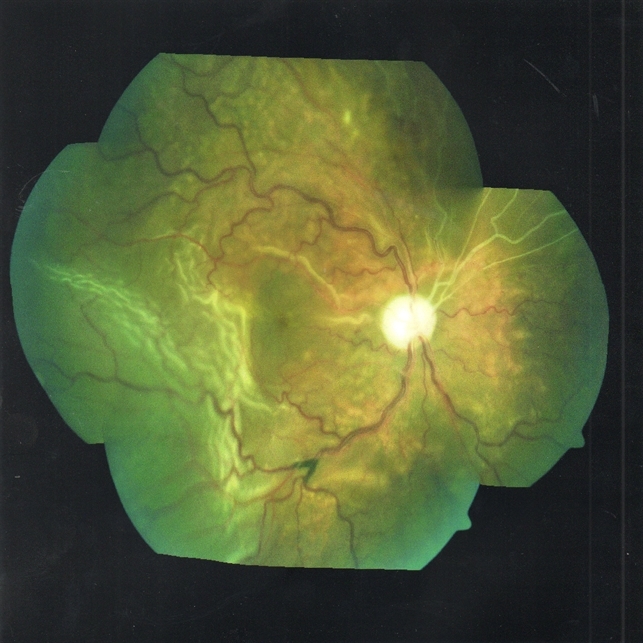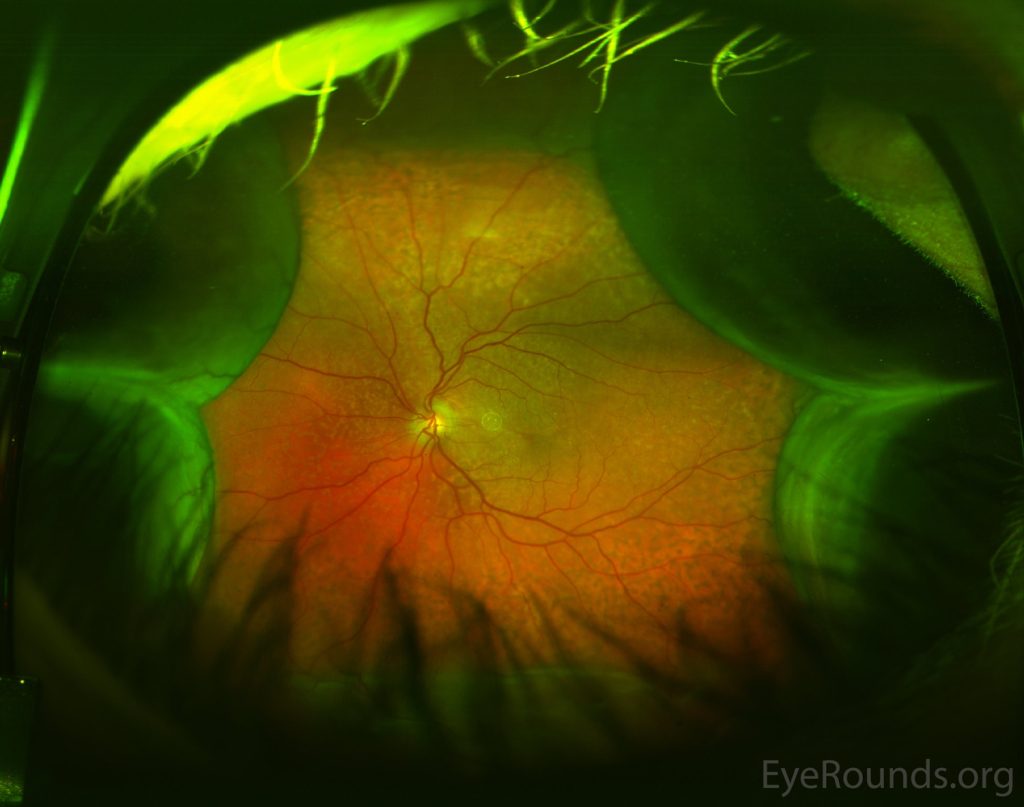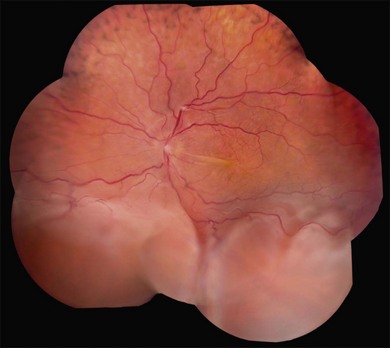CASE REPORT
A 55-year-old male presented to an ophthalmology clinic with a complaint of progressive vision loss in his right eye over the past few weeks. The patient had a history of glaucoma and was using topical intraocular pressure-lowering medications.

On examination, his best-corrected visual acuity (BCVA) was 20/200 in the right eye and 20/20 in the left eye. Anterior segment examination revealed mild conjunctival injection, while fundus examination demonstrated serous macular detachment, shallow choroidal detachments, and peripapillary serous retinal detachment in the right eye.
The left eye appeared normal. Given the clinical findings, Uveal Effusion Syndrome (UES) was suspected in the right eye.
Uveal Effusion Syndrome (UES) DISEASE entity
Uveal Effusion Syndrome (UES) is a rare syndrome of idiopathic exudative detachments of the choroid, ciliary body, and retina, thought to arise from impaired posterior segment drainage usually associated with scleral thickening.
Idiopathic uveal effusion syndrome usually affects healthy middle-aged men. However, there are no specific risk factors for the disease.

Uveal Effusion Syndrome (UES) was described for the first time in 1963 by RJ Brockhurst. In 1983, JMD Gass hypothesized that the primary underlying cause is a congenital anomaly of the sclera, and in some cases, the vortex veins.
It is sometimes divided into three types:
- Nanophthalmic eyes – type 1. The eyeball is small (average axial length 16 mm) and high hypermetropic (average +16 diopters).
- Non-an ophthalmic eyes with clinically abnormal sclera – type 2. The eyeball size is normal (average axial length 21 mm) with a small refractive error.
- Non-an ophthalmic eyes with clinically normal sclera – type 3.
MANAGEMENT
Treatment with systemic steroids does not appear to be effective. Surgical decompression of the vortex veins has been described, though the most common treatment is full-thickness sclerotomies to provide choroidal fluid drainage.

An exit of sub choroidal fluid can be performed by full-thickness sclerectomy, sub scleral sclerectomy, with or without the application of mitomycin C.
Vitrectomy has been described for the management of uveal effusion syndrome. In cases of uveal effusion without an ophthalmic, vitrectomy hastens quick reattachment of the retina and may result in better visual outcomes. In cases of an ophthalmic eye, it would be better to perform a sclerectomy first.
Prognosis:
The largest case series suggests that sclerectomy produces an anatomic improvement in approximately 83% of treated eyes after a single procedure and in about 96% after one or two procedures. Final visual acuity improves by two or more lines in 56% of the eyes, is stable in 35%, and worsens in 9%.
Although extremely rare, UES is a serious condition that is difficult to treat and can lead to severe and permanent visual loss in both eyes.
Would you have interest in taking retina images by smartphone?
Fundus photography is superior to fundus analysis as it enables intraocular pathologies to be photo-captured and encrypted information to be shared with colleagues and patients.
Recent technologies allow smartphone-based attachments and integrated lens adaptors to transform the smartphone into a portable fundus camera and Retinal imaging by smartphone.
RETINAL IMAGING BY YOUR SMARTPHONE
REFERENCES
- Gass JD. Uveal effusion syndrome. A new hypothesis concerning pathogenesis and technique of surgical treatment.Retina. 1983; 3(3):159-63.
- Uyama M, Takahashi K, Kozaki J, Tagami N, Takada Y, Ohkuma H, Matsunaga H, Kimoto T, Nishimura T. Uveal effusion syndrome: clinical features, surgical treatment, histologic examination of the sclera, and pathophysiology.Ophthalmology. 2000 Mar; 107(3):441-9.
- Ohkita T, Emi K, Toyoda E, Ueno C, Sawada K, Sawada K, Matsumura N, Morita S, Kashimoto D, Oyagi T, Ikeda T. Efficacy of vitreous surgery for uveal effusion syndrome. Nihon Ganka Gakkai Zasshi. 2008 May; 112(5):472-5.
- Elagouz M, Stanescu-Segall D, Jackson TL. Uveal effusion syndrome. Surv Ophthalmol. 2010 Mar-Apr;55(2):134-45.
- Brockhurst RJ. Nanophthalmos with uveal effusion: a new clinical entity. Trans Am Ophthalmol Soc. 1974; 72:371-403.
RETINAL IMAGING BY YOUR SMARTPHONE

RETINAL IMAGING BY YOUR SMARTPHONE


